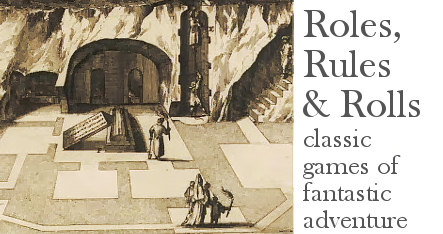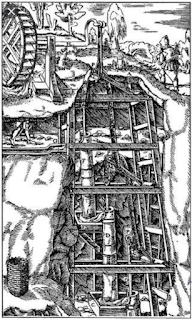The full title of this post belongs to a legendary
board wargame of World War 2 in Europe, published by Avalon Hill in 1974. I owned it, and played it solo obsessively, as a teenager. Some of the finer points I only picked up following forum posts on BoardGameGeek last decade.
The partial title belongs to a novel by the Chilean writer Roberto Bolaño, one of many works published only after his untimely death in 2003. The protagonist is a champion player of the boardgame, among other titles. Impressively, the game's play is described in accurate detail throughout the novel, and plays a major part in the plot. To my knowledge, this is the only literary work to treat a hobby game in this way; I'm not talking about the haze through which a number of mainstream writers have rediscovered their
teenage Dungeons and Dragons days recently.
A combination of an intensely familiar game, and an intensely recognizable setting for me (a seaside tourist town in northeastern Spain, similar to the one half my family is from). You would think it irresistible. But, probably as intended, the short novel left me ambivalent as it ended.
THE GAME
At one level, Rise and Decline of the Third Reich is a slogging game of economic warfare waged on the basis of the all-important Basic Resource Points (BRPs). These are gained from territory conquered and held, and spent on waging offensives and replacing units lost to the game's bloodthirsty combat tables. Abstract submarine war and strategic bombing rules allow direct attacks on enemy BRPs. Diplomatic events offer minor yet consequential variants on the strategy of the game, which usually follows the ebb and flow of actual events.
But the stolid economic game fuels a demanding, knife-edged combat. Disaster always looms through encirclement and the catastrophic capture of a major capital. Armor, airborne, and sea invaders can ruthlessly exploit inor mistakes in placement. Further enablers of catastrophe: a low-probability combat outcome that spells disaster for an attacker who hasn't piled advantage thick enough, and the feared moment when a change of initiative based on underlying economy gives one player two turns in a row.
These strategic features come through blurrily in the novel, but the details of the game are all described extremely correctly, suggesting that Bolaño is either a fan of the game or consulted one extensively. The only few mistakes are probably errors in translation from Spanish to English. An uninitiated reader would still get the idea: this is an astoundingly complex game of skill and chance for nerds, played on the stage of world history. What's brought across most visibly is the Axis player's chance to overcome the weighty accumulation of economic destiny against them -- first Soviet, then American BRPs -- through lightning conquest and skilled tactical play.
THE NOVEL (revealing plot points)
The Third Reich is one of those novels (like Iris Murdoch's
The Bell) where the author builds suspense along several lines of menace and desire, only to shrink away from fulfilling the crude expectations of the genre, delivering an anticlimax that is so very literary.
Our German narrator, Udo, is taking his weeks-long holiday in a Catalan seaside town. An emotional cipher, he never shows the passion for his girlfriend Ingeborg that he does for the solo Third Reich game he has set up in their room to plan out a strategy article. They socialize with another German couple, Charlie and Hanna, without much enthusiasm, and rub elbows with local lowlifes who are less sinister than they appear.
While the supposed driver of the plot is the mystery of Charlie's disappearance in the sea one day, there is more underlying drama in the way Udo's solo game gets replaced with a head-to-head contest. The live opponent turns out to be the local character El Quemado, a mysterious South American man with ugly burn scars who works and lives on the beach. He learns the game with surprising speed, taking the Allied side. As in history, Udo starts out in a winning position, but El Q turns things around surprisingly and drives back the Reich. As it's later revealed, he has some help, being coached by the hotel's reclusive German owner who has been sneaking into Udo's room to study the game.
I wish the ending was something worth spoiling. But as I've said, there is no real climax on any "front". The game ends peacefully, a corpse doubtfully similar to Charlie's washes up, a romantic intrigue never goes past first base. Having overstayed well into September, Udo returns to Germany (Ingeborg, and hs job, both long gone) to resume his hobby.
THE NOVEL AND THE GAME (more plot reveals)
For non-gamers, the game is still an effective literary device, an arena of
alternative history. Through it, Udo gets to dream of winning the war, playing his own country,
pursuing a strategy in which he
invades Spain to get to
Gibraltar. There's an obvious irony in the parallel reality of the German vacationers "occupying" Spain though peaceful means.
Udo tries to square his national self-esteem with the moral abyss, disconnecting bravery and technical skill from the aims of the Nazi Party. Udo knows each German corps counter by its general's name, a list he recites for us at one point in a narcotic litany. Near the end he has visions of the brave, great generals looking down from the heavens and approving his efforts, doomed as they all may be in this instance.
El Quemado is not having it, and through Udo's unreliable narration we see glimpses of what the game must mean to someone who, it's implied, has survived a South American authoritarian regime. As the cardboard war's tide turns, Udo's opponent hangs photocopies of Nazi documents on the wall, a reminder of the moral facts that Udo would rather forget. As Udo's defeat becomes certain, El Quemado begins to mutter about war crimes trials, preparing us for a violent dénouement that never happens. Instead, Udo resigns himself to technical and moral defeat, the opponents hug it out late at night, and he has to return to his boring job and content himself simply with Germany being the peaceful, economic master of Europe.
IN CONCLUSION
As I said, there isn't another novel out there that uses gaming in this way, as a living, adult hobby that becomes a vehicle for deeper meaning. It's worth reading, and probably a better introduction to Bolaño than his mega-novel 2666 which I started but had to put down at the point where the exposure of misogyny via the murders of women in Mexico became a relentless, voyeuristic supercut. No matter what you think of it as a novel,
The Third Reich is a rare treat for the literary-minded gamer.


















